There are two major standards (ways) of attaching bicycle cassettes to the rear wheel: old freewheel and the newer freehub. The differences and how to tell one from the other are explained in this post.
If you have any questions (or additions and corrections), please use the BikeGremlin forum:
www.bikegremlin.net
1. Freewheel VS Freehub
Rear hubs are explained in the Bicycle rear hub post, while here the emphasis is on sprocket sets (i.e. cassettes) themselves. Sprocket sets come in two standards: freewheel, or a freehub (with a cassette). Depending on the type of rear hub, one or the other type is used. An image speaks clearer than a thousand words:
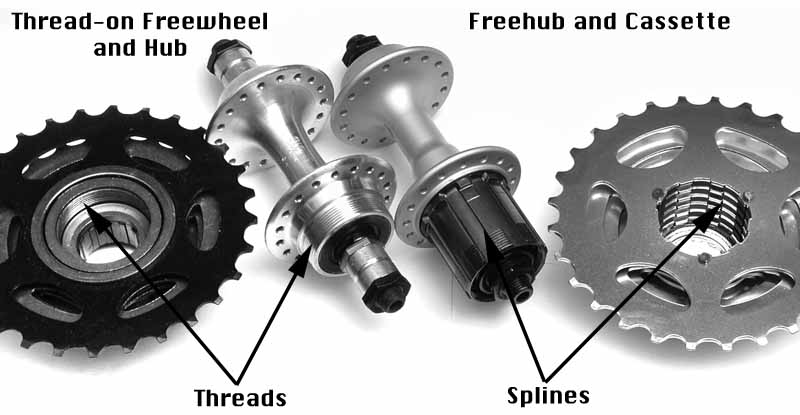
Attention should be paid to this when buying and changing sprockets, so that the right ones are used. Freewheel is screwed onto the rear hub, while cassette is just slid onto the hub splines, held in place with a special lockring. The very end of the (rear) hub differs for each type, so it is easy to identify the standard, even before removing sprockets:



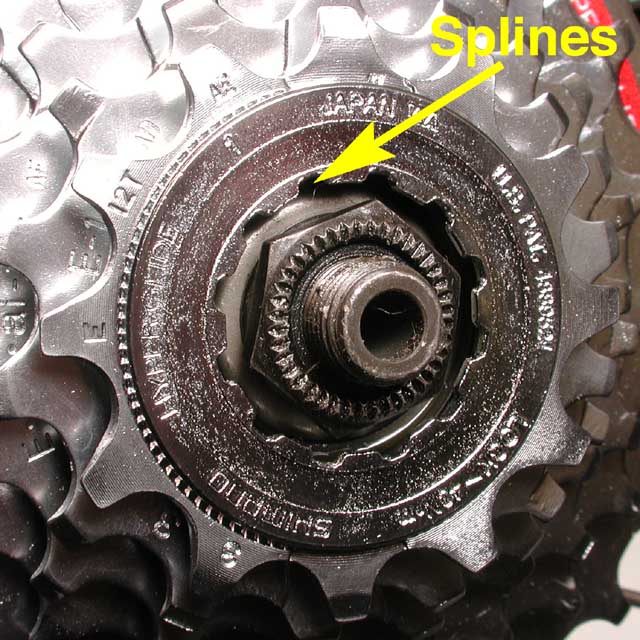
Apart from this, it helps with identification knowing that Suntour freewheels usally come with 5, rarely 6 sprockets, Shimano and SRAM freewheels are usually with 6 or 7 sprockets (extremely rarely 8, or 9, but that is dangerous for the rear axle, as it is explained in Bicycle rear hubs post).
Cassettes usually come with 7 (seven is the most rare), 8, 9, 10, 11 sprockets. Superior standard than freewheel.
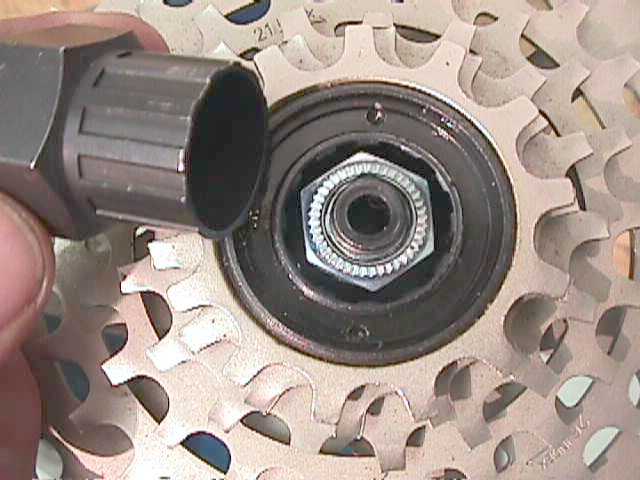
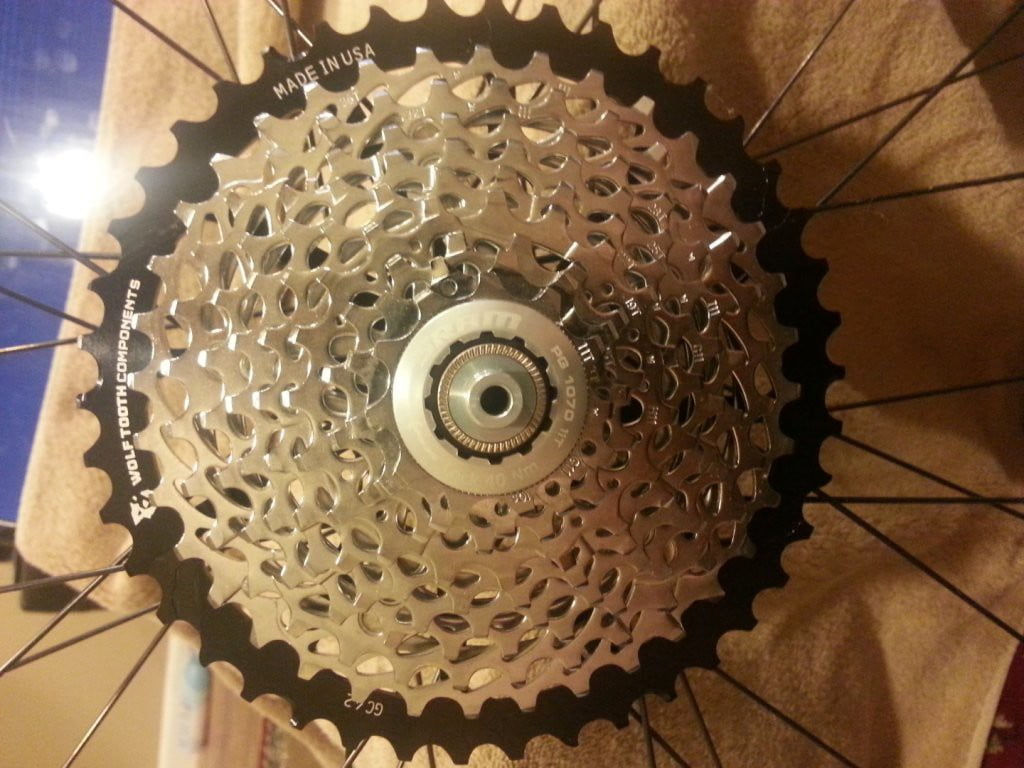
That is why when buying new (to replace worn) sprockets, it is important to know whether it is a freewheel or cassette. If buying a new (rear) hub, it is better to buy a freehub one, for cassettes, but if changing just sprockets, in case the hub is for freewheel, it is very expensive to buy the wrong, cassette type sprockets, since they require the change of hub as well, which is more expensive.
2. Sprockets and spacers
Frewheels come with sprockets bolted together, without possibility of swapping them. Cassettes come with loose sprockets that have spacing between them. Some cassettes do come with sprockets held together with bolts or rivets, but these are just for easier mounting – they can be removed without affecting functionality, so that individual sprockets can be swapped.
Images explain better:

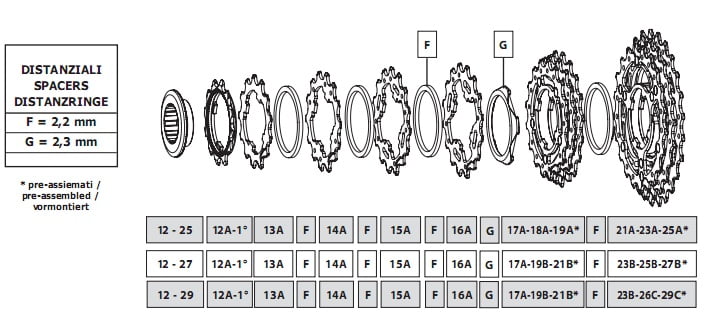
3. Final note – Hyperglide vs Uniglide vs Hyperglide+ vs XD
There is an old “Uniglide” standard for freehub splines, and a new “Hyperglide”.

Note wider gap between two Hyperglide splines (the rest are the same, just like Uniglide).
Old Uniglide was completely symmetric, so allowed sprockets to be placed in whatever position. Hyperglide has one wider spline, and sprockets have one wider groove for that wide spline, so they can only be placed one way. This way sprockets are placed so their teeth rotate exactly the same way, which allows for better shifting, allowing the chain to engage two adjacent sprockets at the same time, practically climbing onto the next gear (sprocket).
Big advantage of Uniglide is that it allows for sprockets to be flipped on the other side, which practically gives a new cassette (unworn side is used)!
When shopping for a new rear hub, it is wise to get a freehub type, and make it a Hyperglide freehub, avoiding the old standards. Hyperglide freehub will accept Uniglide sprockets as well (except the smallest, locking sprocket – Hyperglide uses a special nut for locking the cassette in place).
Update as of summer 2018:
Both Shimano and SRAM have made one new freehub standard each (with matching cassettes), for their 11 and 12 speed MTB cassettes. SRAM’s standard is called “XD“, while Shimano’s is called “Hyperglide+“.
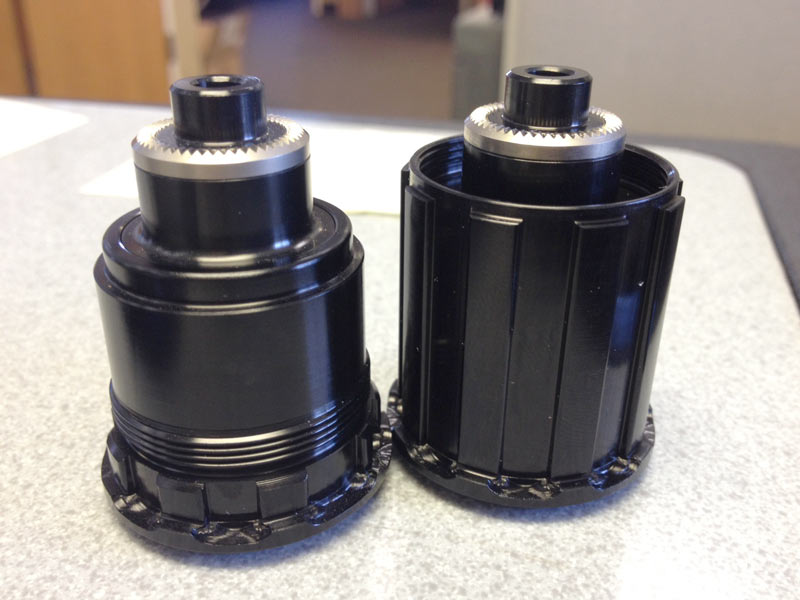
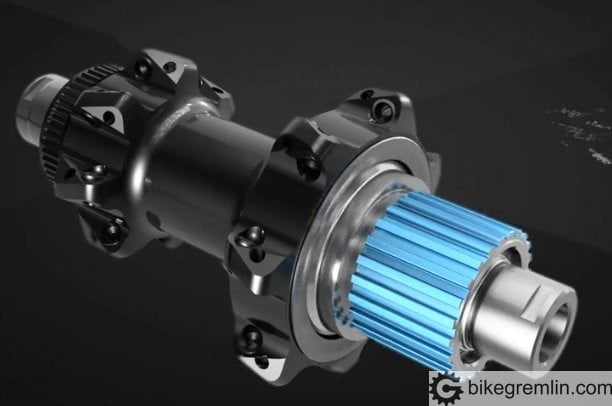
Related post – Removing rear sprockets (cassette or freewheel):

If you have any questions (or additions and corrections), please use the BikeGremlin forum:
www.bikegremlin.net

SECOND PARAGRAPH QUOTE: Attention should be paid to this when buying and changing sprockets, so that the right ones are used. Freewheel is screwed onto the rear hub, while cassette is just slidden onto the hub splines …etc.
SLIDDEN? Boy what terrible grammar! Don’t you know the past tense of “slide” is “slud”?
;-))
Actually I believe the word there should be “slid” but I would have used the different word, “slipped” instead since “slid” seems awkward also.
OTOH, the point was communicated and that’s the whole point of language, so it’s no big deal either way. …slud… HAHAHAHA. conjugating verbs in English never did make sense.
Thank you for pointing that out. English is not my mother tongue, so if you notice any other mistakes, whether spelling, grammar, or construction of sentences, I’d be thankful if you could point them out.
Cheers
Dear 200K – Relja seems to be from Serbia (Srbja) and his English is excellent. As per the link https://www.wordhippo.com/what-is/the-past-tense-of/slide.html
his use of the word “slidden” is still fine, but it is an obsolete term. The past participle of slide is, as you say, slid, and being the correct term, it is not thus awkward, and can be used with full comfort.
All the best, cheers and enjoy, and thanks for your great articles Relja!
Michael
Hello, I didn’t measured well (I didn’t wanted to disassemble the axle), so I’m asking it to you because you have good experience.
I have a freewheel and the relative tool to disasseble it. A part from buying the chain tool to maintain still the cassette, can I use the tool for freewheel to disasseble the lockring of a cassette?
It seems identical the notches: is it correct?
thank you
Ciao Fabio,
I hope this video answers your question:
How to remove, and mount, a cassette, or a freewheel
Relja
Thank you Relja for the resource: very explanatory!
have a nice day